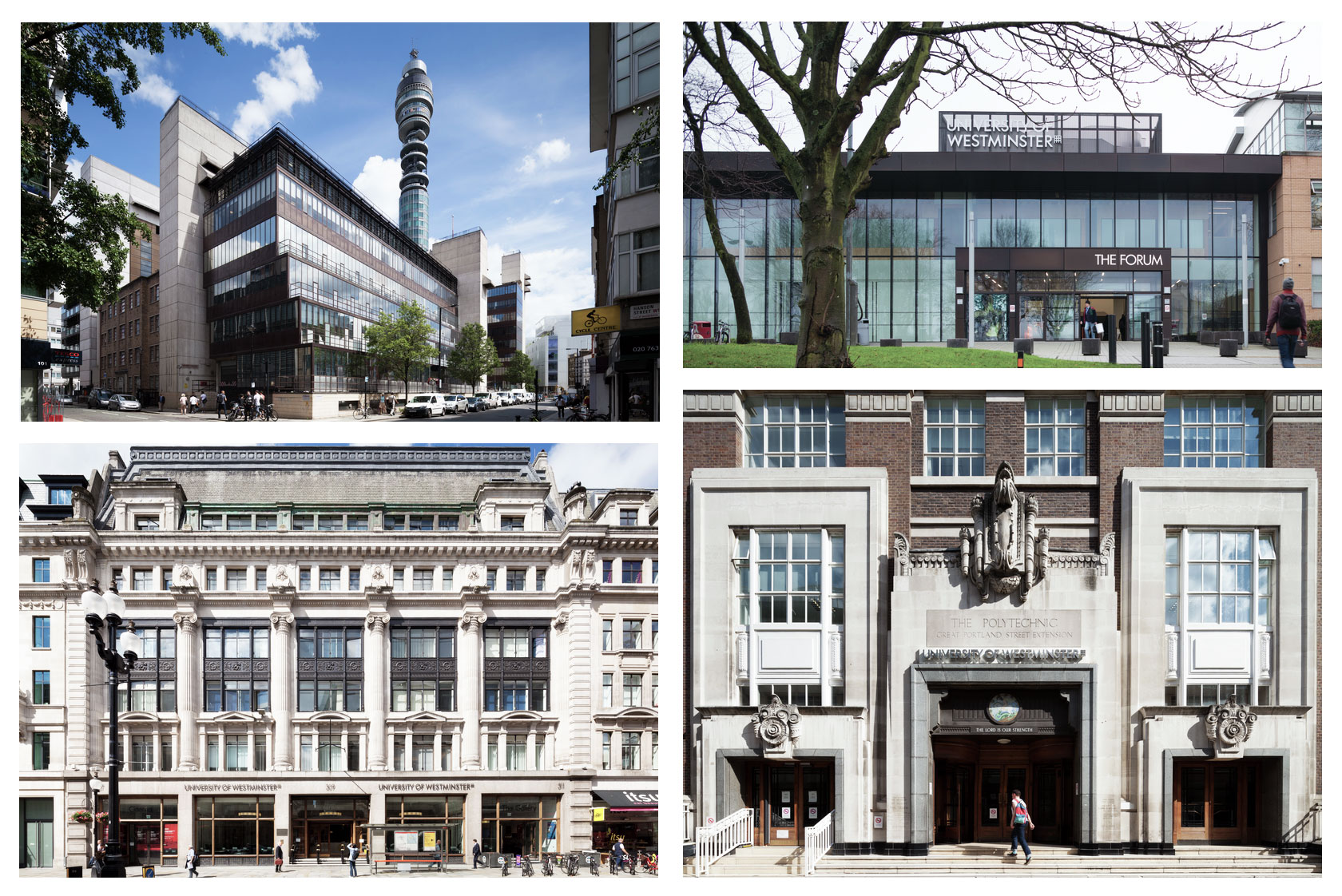
User Experience for Libraries: A Multi-site Approach at the University of Westminster
In 2019, an ambitious user experience project started in the University of Westminster Libraries. It was accompanied by Aimee Andersen and Sinead Beverland, who talk to us about UX methods, successes and failures and give a some useful tips for beginners.
Interview with Aimee Andersen and Sinead Beverland
The application of user experience (UX) in libraries is an exciting and multifaceted topic. Lastly, we therefore looked at “User Experience for Libraries: The Best Tools and Methods for Beginners” in a blog article. We also showed “User Experience in Libraries: 4 Best Practice Examples from the ZBW” and spoke to Larissa Tjisterman, who works in the field of UX at the Library of the University of Amsterdam.
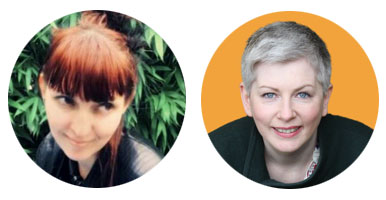
Today we talk to Aimee Andersen and Sinead Beverland about how they are using UX to get the most out of the four libraries at the University of Westminster (UoW). They started there in 2019 as UX and Engagement Coordinators with a UX project. The main aim was to make the libraries and within the library spaces places where students like to work and work well. In addition, they were to use UX methods to improve the library search. In the middle of the project, they were surprised by the coronavirus and the lockdown and had to rethink.
In the interview, they share their experiences, their best methods and their tips for UX beginners with us and also reveal what didn’t work at all. They explain how to get students involved in improving libraries through UX, what to look out for and why the right timing is so important.
Aimee and Sinead, you are working in the field of User Experience in the University of Westminster Libraries. When and why did you start? What does that mean practically?
Aimee: A unique role of User Experience and Engagement Coordinator was created in 2019 by the Head of Library and Archives Services, Helen Rimmer. It was a secondment role which was shared equally between Sinead and myself. The role was initially for a year, in which we prepared a vision of what we would do and hope to achieve within that year. The role was then extended for another six months to focus solely on UX around our library catalogue.
In practical terms, it meant that we could roadmap out our projects around what we hoped to gain from the UX work and time them accordingly. The managers had already conducted Break up letters/love letters and cognitive mapping with great success and the aim of the role was to allow a staff member (in our case, two members of staff) to dedicate time solely to UX.
Sinead: Our brief at the beginning of the role was to focus on space and communication within the library. This was quite the challenge in that we have four libraries within the University that serve a varied range of students and staff. We had to devise and implement UX projects that would engage this broad demographic of users whilst providing us with useful, tangible results that could improve our service.
Ultimately, we wanted to see our space and service through the eyes of our users and this dedicated UX role allowed us to do just that.
What are your goals with UX? Did you achieve them? Which UX methods do you apply at the UoW libraries?
Aimee: As mentioned, this was a very unique opportunity to try anything! We got to dip our toes into UX work and explore . Having said that, we were asked to conduct some UX work around staff well-being (we were in lockdown by that time and used an online storyboard) and we focused on communication and space. Knowing that we were only in role for a specific period of time, we spent quite a bit of time deciding on the vision for the role and then explored techniques that focused on this vision, namely the ideas of space and how the library community communicates within that space.
Sinead: With the initial goal to look at space and communication within the library, we chose our UX methods accordingly. This meant they ranged from an induction Graffiti Wall (canvassing new students), to a Photo Journal (asking students to design their ideal future library), to Storyboarding (understanding staff challenges during the pandemic).
These specific projects gave us insight into what information students want from us, how they would like us to deliver it and how they envisage the physical library space developing.
– Sinead Beverland
Having started our UX work on site, we did have to move online when the coronavirus pandemic began and lockdown hit the UK! Working on projects during a global pandemic was not easy and brought with it a whole new set of challenges. We had to adapt to the new situation, for instance, moving our storyboard project online and utilising our social media to engage with the university community.
During this time of working remotely, we were also tasked with looking at Library Search from a UX perspective. This became a huge piece of work within itself, incorporating remote staff and student interviews, whilst analysing statistical data and chat transcripts pertaining to the Library Search user experience. The work culminated in a report of our findings which included a number of recommendations for changes to Library Search that could enhance the usability and experience for all.
Can you give us a practical example that worked, where you applied UX to solve a problem?
Aimee: Prior to coming into the role, the managers had conducted the UX technique of love letters/break up letters to the library, of which I was a part. It was very successful in that we received without a doubt enough break up letters to a particular floor of one of our libraries regarding the temperature. Having learnt from that experience, it was easier going forward with our future projects to be able to solicit how to develop recommendations that are both forward thinking and practical.
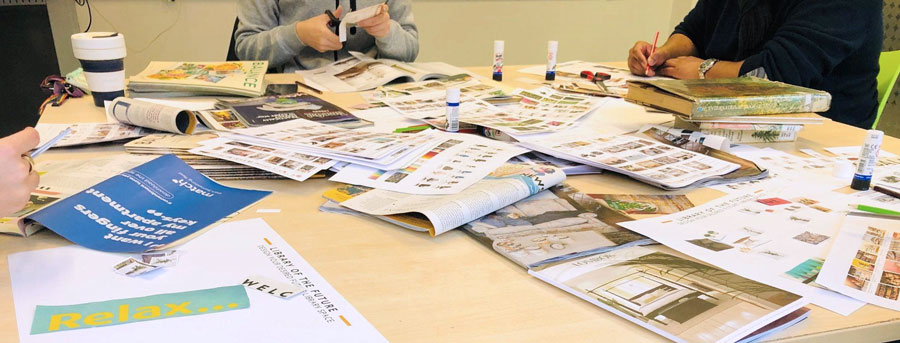
Creating a collage of proposals from students of the Libraries at the University of Westminster©
In our photographic journal, we gained a lot of information from students’ collages of their visions of their ideal future libraries. Although there were some very impractical, but fantastic suggestions (such as a sun filled meditation room, a clothes exchanges and a bar), we garnered invaluable ideas around what we could practically implement, such as more the importance of more communal study spaces, greenery within the library and using student artwork around the library.
We also were able to understand how important the idea of community within the library space was to our students as well as the isolation they sometimes feel and how the library space helps them to meet, and interact.
– Aimee Andersen
Sinead: For each of our UX projects we collated reports, including recommendations which were circulated within the department and to senior management. From our UX Library Search report, a working group was established and changes are in the process of being made to improve the experience and usability of the system. A specific example would be amending generic and unhelpful icons that are used to denote “databases”, “journals” etc.
To apply UX methods, you need library users who are willing to participate. How do you manage to find and motivate them?
Aimee: This was one of the toughest parts of the role and I feel like I learnt a lot from trying to garner engagement. We put a lot of thought and effort into peripheral ways of reaching students, such as social media, student union and other departmental connections. We also had a healthy budget for the role and were able to offer Amazon vouchers as incentives. I found that it also depended on the activity and levels of engagement.
With our graffiti wall project, we had no direction or control over engagement, apart from deciding where to place the wall for maximum interaction, however we did need to recruit students for the photo journal project. The students that participated with the photo journal were students that were attracted to the project and their interest level contributed greatly to the project’s success.
We also asked for feedback from students with each project around ways we could improve our student engagement and participation.
– Aimee Andersen
Sinead: Finding participants can often feel like a struggle and we learnt that a lot of factors come into play when you are “recruiting” for a UX project. Timing is incredibly important. In an educational environment it is important to be aware of exam and deadline dates – we tried to schedule our activities at quieter times of the year so that people had more time to offer. When wanting to capture information during a busy period, like induction week, we chose a UX technique that was bold, quick and easy to use – a Graffiti Wall. Students could jot down their question on the wall as they passed by, which meant anyone could access it at any time.
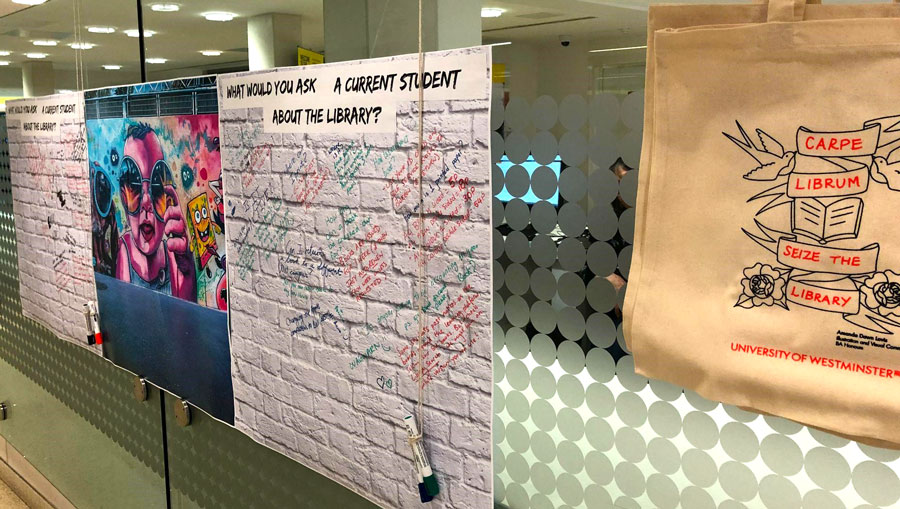
Graffiti Wall, University of Westminster Libraries ©
We also put a lot of time and effort into designing eye-catching posters, flyers and online posts to encourage participants. We wanted to make these as appealing and diverse as possible to capture the attention of a wide demographic. This was a little time consuming but well worth it as we had many students reach out to us from this marketing.
We were fortunate to have wonderful and engaged participants for all our projects. For our part, we did also ensure that we kept in contact with them throughout and adopted a very collaborative and informal approach, in keeping with the tone of our UX work.
– Sinead Beverland
Liaising with other university departments and developing a good relationship with the Student Union undoubtedly helped us to promote and find participants for all our UX work. Working with student and staff communications and student union representatives gave us a greater insight into how to appeal to our users and more scope to reach them through their channels.
What are the – lets say – three most important lessons you have learned from applying user experience methods in UoW libraries?
Aimee:
- Ensuring that projects are conducted when students are a) around and b) have enough time to commit and participate
- Creative thinking: Our most successful project by far in terms of positive feedback was the collages for the future libraries; students loved it. We were also enamoured with the idea as collaging removes the pressure of having to “draw” whilst allowing a creative and reflective expression.
- Never assume! We tried to keep this at the forefront of everything we did, and we created projects around this idea, hopefully allowing students and staff to express themselves within the project. We constantly conversed around the idea of our assumptions and job sharing in this respect was incredibly useful.
We also needed to think outside the box around how to manoeuvre lockdown, given that we had created the role for the year as being on campus. It was an incredibly unique opportunity to capture the experiences of that time whilst we were in the midst of it, as opposed to reflecting back upon the experience of attempting to study during the strange time that was the initial lockdown.
Sinead: I would totally agree with Aimee’s three lessons! Thinking outside of the box and finding creative ways to engage students was key. I learnt the importance of creating a dialogue with our users and to go beyond just listening to what they told me. It was equally important to observe how they instinctively interacted with space and services.
Have you also used methods that did not work at all? What have been your biggest or funniest fails?
Aimee: As the lockdown continued, we were thinking of different ways to launch small virtual projects, and one of these was the idea of book shelfies. We did not have as much engagement with this project as we had with previous work. This could have been because it was just after lockdown and everyone was trying to adjust to a new way of working.
Sinead: As a small side UX activity, we tried to canvas opinions on a new library welcome desk however, not having much time available we put together a simple online padlet and encouraged library users to share their opinions over the course of a week. This lacked the creativity of our other projects and was not well promoted, thus, we got very little input! A lesson learnt to give your all to everything you do!
What are your tips for libraries that would like to start with UX? What is a good starting point?
Aimee: I attended the UXLib Conference a couple of years ago and I found the talks and workshops incredibly interesting and inspiring. Reach out to other staff members doing similar things to what you would like to do. I met a few people at the conference that were very helpful in keeping in contact and were happy to exchange ideas etc. We also started a twitter account in which we posted promotion and post project photos as well as tweeting and retweeting any interesting UX related stories. It was a good way to keep a running record of what we were doing and what we were learning as well as networking with UX colleagues elsewhere.
Sinead: To look at what other institutions are already doing is a great starting point. In terms of UX, for example, the Glasgow University, the University of Southampton and the University of Kent were inspiring for me. Learn from those that have gone before you! We found that the Library User Experience Community is strong and incredibly supportive and helpful. If in doubt, reach out to people and ask some questions. In our experience Library UX’ers are more than happy to chat and share advice and thoughts. Be sure to check out“Exploring UX research and design in libraries” and engage with social media, try hashtags such as #UXLIB.
We were talking to Aimee Andersen and Sinead Beverland.
You may also find this interesting:
- The Hashtags #libux, #uxlib and #uxlibs on Twitter are filled with active conversations and ideas about UX in libraries.
- Exploring UX research and design in libraries .
- What is a UX Librarian?
- UX in Libraries – it’s all about inclusion!
- UX in Libraries Resource List – A structured introduction to UX and ethnography .
- Engaging students through User Experience at the University of the Arts London (PDF).
- User Experience in Libraries: Insights from the Library of the University of Amsterdam .
- user Experience in Libraries: 4 Best Practice Examples from the ZBW .
- User Experience for Libraries: The Best Tools and Methods for Beginners .
- Libraries as a Place after Corona: Hybrid and Participatory?
We were talking with Aimee Andersen and Sinead Beverland
Aimee Andersen has worked with the University of Westminster libraries for over seven years and was recently in the role of UX and Engagement Coordinator. She has an academic background in Anthropology and has worked across both the social service sector as well as libraries in both Australia and the UK. She is actively engaged in social projects within UoW libraries such as the Human Library and the library UX team. She can also be found on LinkedIn.
Portrait: Aimee Andersen©
Sinead Beverland has been working in Academic Libraries for 16 years and was recently UX and Engagement Coordinator at the University of Westminster. Alongside this role she is a writer and independent film producer who works with a collective of talented creatives to create engaging stories. Her experience as both writer and producer have helped inform her approach to planning and engaging staff and students with both UX and library social media.
Portrait: Sinead Beverland©, photographer: Brian Franklin
View Comments
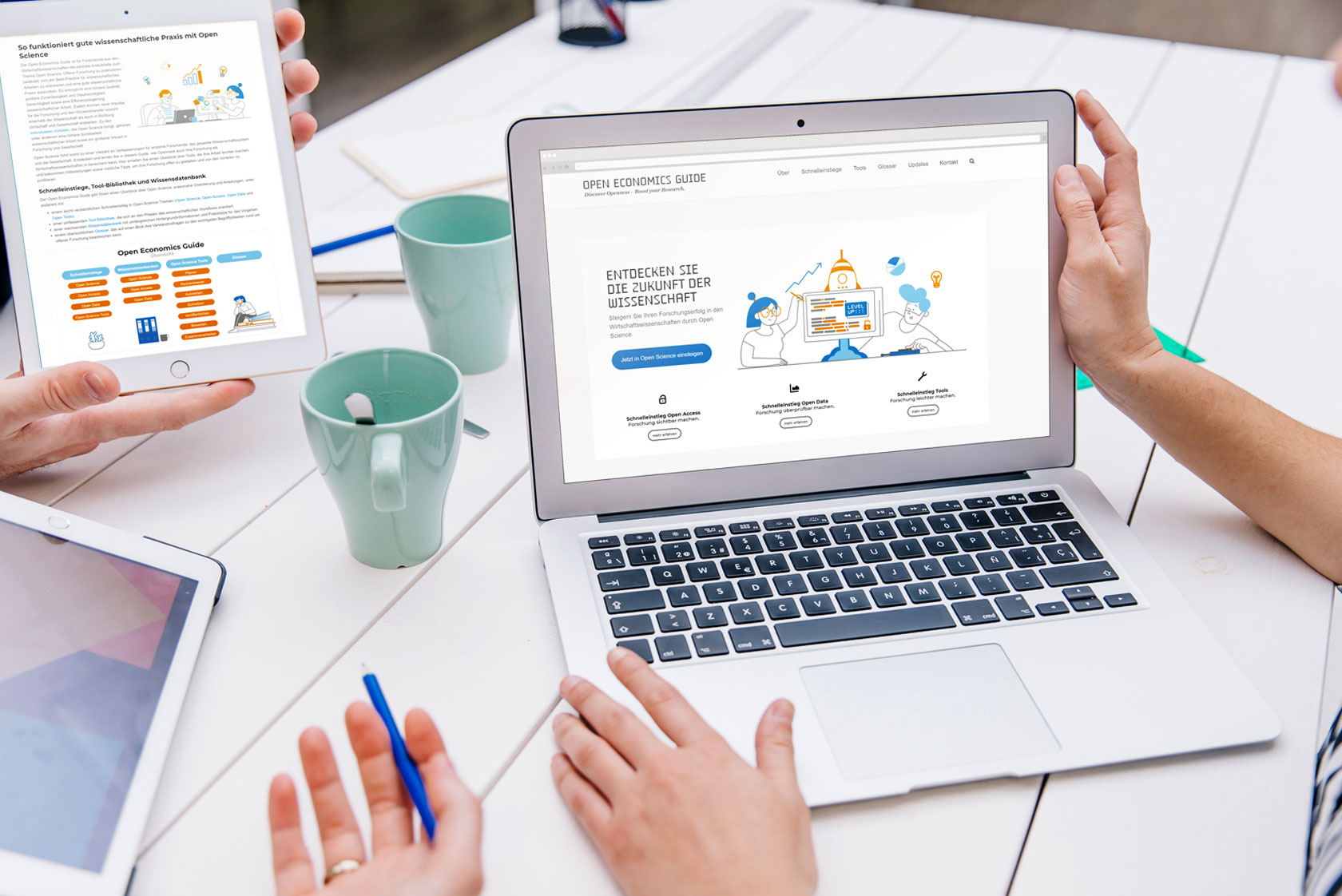
Open Economics Guide: New Open Science Support for Economics Researchers
Despite many benefits of Open Science, several barriers still prevent researchers...



